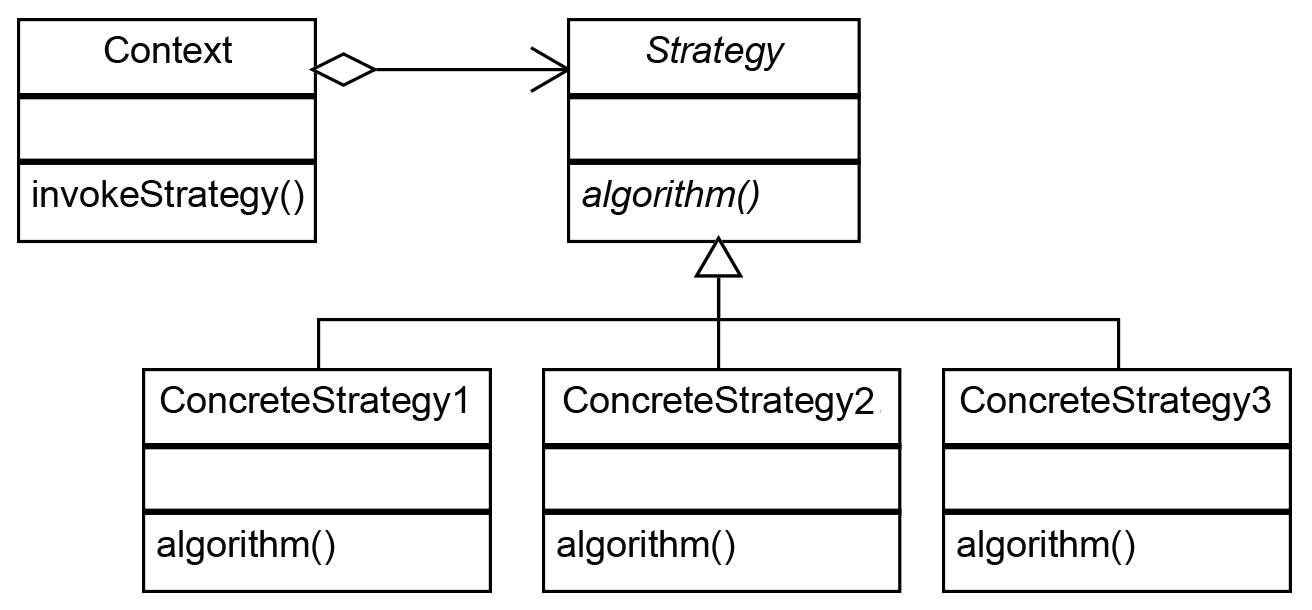The strategy pattern
A particular situation specific to behavioral patterns is when we need to change the way to solve a problem with another one. As we already learned in the first chapter, changing is bad, while extending is good. So, instead of replacing a portion of code with another one, we can encapsulate it in a class. Then we can create an abstraction of that class on which our code depends. From that point, our code becomes very flexible, as we can now use any class that implements the abstraction we just created.
Intent
The strategy pattern defines a family of algorithms, encapsulating each one, and makes them interchangeable.
Implementation
The structure of the strategy pattern is practically the same as the state pattern. However, the implementation and the intent are totally different:

The strategy pattern is quite simple:
- Strategy: The abstraction of a specific strategy
- ConcreteStrategy: The classes that implement the abstract strategy
- Context: The class that runs a specific strategy...




































































